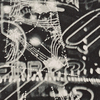"Électricité - Dix rayogrammes de Man Ray et un texte de Pierre Bost", 1931
Portfolio of ten heliogravures of rayographs by Man Ray, each signed in the negative. Mounted on paper and in individual wrappers. 26 x 20.5 cm, S: 37.4 x 27.6 cm. Published La Compagnie Parisienne de Distribution d'Électricité 1931. With a printed inductory text by Pierre Bost. Edition of 500. Text page with dedication "A Madame et Mr Steinert cordialement Man Ray". Also with dedication on the text sleeve "To Grace Frisby [unclear] cordially Man Ray 11 Dec. 1931."
Täydennyslista
Droit de suite (d)
Alkuperä - Provenienssi
Kurt (author and journalist specialized in photography) and his wife Yrsa Bergengren (artist), Stockholm.
Muut tiedot
Of all the American artists living in Paris in the 1920s and '30s, Man Ray was the most technically innovative and artistically productive. This remarkably seductive album of photogravures is an exquisite example of his legacy as America's greatest Surrealist photographer.
A playful alchemist in multiple mediums, Man Ray arrived in France in 1921 (from Williamsburg, Brooklyn) and soon established an influential portrait studio in the incendiary center of an avant-garde community of painters, photographers, filmmakers, and poets. By 1922, he was making cameraless pictures of everyday objects on photographic paper (photograms) that he dubbed "rayographs." The poet Tristan Tzara proclaimed them "dada" and wrote that the photographer "had invented the force of tender and fresh lightning."
Électricité is among the most acclaimed works by Man Ray—a dynamic assemblage of ten rayographs that the artist made as a commission for a private power company that desired to promote the domestic consumption of electricity. At the time, most homes in France relied on natural gas, wood, or coal for lighting, cooking, and heating. Man Ray used electrical appliances (light bulbs, a toaster, an iron, a fan) and electric light to cast the objects' shadows on photographic paper. Then he added wavy trails of power cords and heating coils—symbolic traces of the unseen effect of electric current. He also included in five images his own photographs (female nudes) and other pictures he may have appropriated (a roasted chicken, nighttime signage, the moon). In Électricité, Man Ray demonstrated how electricity (essentially an invisible force) could be a subject and also a modern medium and how it might effectively make a tasty dinner meal, cool the kitchen, eroticize the body, and thus contribute to the quality of life for working-class Parisians.
Although La Compagnie Parisienne de Distribution d'Électricité (CPDE) produced an edition of 500 copies for distribution to their executives and top customers, this particular example is special.































































